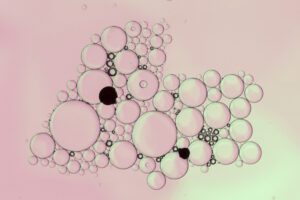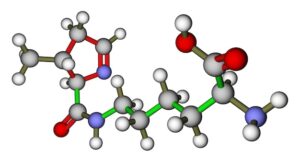Cyclophenylacetic Acid: A Comprehensive Guide
Outline
Introduction
- Overview of Cyclophenylacetic Acid
- Importance in Chemistry
What is Cyclophenylacetic Acid?
- Basic Definition
- Historical Background
Cyclophenylacetic Acid Structure
- Molecular Structure
- Structural Features
Cyclophenylacetic Acid Formula
- Chemical Formula
- Significance of the Formula
Examples of Phenylacetic Acid
- Common Examples
- Structural Comparison
Uses of Phenylacetic Acid
- Industrial Applications
- Pharmaceutical Uses
What is Phenyllactic Acid?
- Definition and Background
- Differences from Phenylacetic Acid
Uses of Phenyllactic Acid
- Health Benefits
- Industrial Applications
IUPAC Name of Phenylacetic Acid
- Systematic Naming
- Importance of IUPAC Naming
Chemical Properties of Cyclophenylacetic Acid
- Physical Properties
- Reactivity and Stability
Synthesis of Cyclophenylacetic Acid
- Common Methods
- Laboratory Procedures
Applications in Chemistry
- Role in Research
- Practical Uses
Health and Safety Considerations
- Handling and Storage
- Potential Hazards
Future Research Directions
- Emerging Studies
- Potential Developments
Conclusion
FAQs
- What is cyclophenylacetic acid used for?
- How is cyclophenylacetic acid synthesized?
- What are the safety concerns with cyclophenylacetic acid?
- Can cyclophenylacetic acid be used in pharmaceuticals?
- What is the difference between cyclophenylacetic acid and phenylacetic acid?
Cyclophenylacetic Acid: A Comprehensive Guide
Introduction
Cyclophenylacetic acid might sound like a mouthful, but it’s a fascinating compound with significant applications in both industrial and pharmaceutical fields. Let’s dive into what makes this chemical so interesting and important.


What is Cyclophenylacetic Acid?
Cyclophenylacetic acid is an organic compound classified within the family of phenylacetic acids. It’s known for its unique structure and versatile applications. Historically, its derivatives have been utilized in various fields, from industrial manufacturing to pharmaceutical development.
Cyclophenylacetic Acid Structure
The molecular structure of cyclophenylacetic acid features a cyclohexane ring attached to a phenyl group and an acetic acid moiety. This combination of rings and functional groups contributes to its distinctive chemical properties and reactivity.


Cyclophenylacetic Acid Formula
The chemical formula for cyclophenylacetic acid is C14H14O2. This formula highlights the presence of 14 carbon atoms, 14 hydrogen atoms, and 2 oxygen atoms, reflecting its complex yet fascinating molecular makeup.
Examples of Phenylacetic Acid
Phenylacetic acid itself is a simple yet widely used compound in chemistry. Some common examples include:
- Phenylacetic Acid: C8H8O2, a precursor in the synthesis of various pharmaceuticals.
- 4-Chlorophenylacetic Acid: C8H7ClO2, used in organic synthesis.
These examples help us understand the diverse applications of phenylacetic acids in general.
Uses of Phenylacetic Acid
Phenylacetic acid serves several purposes, primarily in the industrial and pharmaceutical sectors:
- Industrial Applications: Used in the production of perfumes and penicillin.
- Pharmaceutical Uses: Acts as a precursor in the synthesis of various drugs.
What is Phenyllactic Acid?
Phenyllactic acid, another interesting compound, differs from phenylacetic acid despite the similar name. It is characterized by a hydroxyl group (-OH) attached to its molecular structure, which significantly alters its properties and uses.
Uses of Phenyllactic Acid
Phenyllactic acid is notable for its health benefits and industrial applications:
- Health Benefits: Known for its antimicrobial properties, making it useful in food preservation.
- Industrial Applications: Used in the synthesis of biodegradable plastics.
IUPAC Name of Phenylacetic Acid
The IUPAC name for phenylacetic acid is 2-Phenylacetic acid. This systematic naming is essential for the accurate identification and communication of chemical compounds in the scientific community.
Chemical Properties of Cyclophenylacetic Acid
Cyclophenylacetic acid exhibits several notable chemical properties:
- Physical Properties: It typically appears as a white crystalline solid with a characteristic odor.
- Reactivity and Stability: It is relatively stable under normal conditions but can react with strong oxidizing agents.
Synthesis of Cyclophenylacetic Acid
Synthesizing cyclophenylacetic acid involves several chemical reactions:
- Common Methods: One method involves the Friedel-Crafts alkylation of benzene with chloroacetic acid, followed by cyclization.
- Laboratory Procedures: This process requires careful control of reaction conditions to ensure the purity and yield of the product.
Applications in Chemistry
Cyclophenylacetic acid is used in various research and practical applications:
- Role in Research: It serves as an intermediate in the synthesis of complex organic compounds.
- Practical Uses: Its derivatives are explored for potential use in pharmaceuticals and materials science.
Health and Safety Considerations
When handling cyclophenylacetic acid, safety is paramount:
- Handling and Storage: It should be stored in a cool, dry place, away from incompatible substances.
- Potential Hazards: Direct contact can cause irritation, so appropriate protective equipment should be used.


Future Research Directions
The future of cyclophenylacetic acid research looks promising:
- Emerging Studies: New studies are exploring its potential in drug development and novel materials.
- Potential Developments: Advances in synthesis methods and applications could expand its use in various industries.
Conclusion
Cyclophenylacetic acid is more than just a chemical compound; it’s a gateway to numerous applications in science and industry. Understanding its structure, properties, and uses helps us appreciate its importance and potential.
FAQs
What is cyclophenylacetic acid used for?
Cyclophenylacetic acid is primarily used in chemical research and as an intermediate in the synthesis of more complex compounds.
How is cyclophenylacetic acid synthesized?
It is synthesized through methods such as the Friedel-Crafts alkylation of benzene followed by cyclization, requiring precise control of reaction conditions.
What are the safety concerns with cyclophenylacetic acid?
Safety concerns include irritation upon contact and the need for proper storage in a cool, dry place. Using appropriate protective equipment is essential.
Can cyclophenylacetic acid be used in pharmaceuticals?
Yes, its derivatives are explored for potential use in pharmaceuticals, although more research is needed to fully understand its applications.
What is the difference between cyclophenylacetic acid and phenylacetic acid?
Cyclophenylacetic acid includes a cyclohexane ring in its structure, whereas phenylacetic acid does not. This structural difference leads to variations in their properties and uses.
Sultan Group: Your Trusted Partner in Chemical Supply
At Sultan Group, we are committed to providing high-quality cyclophenylacetic acid and a wide array of other acids to meet your research and industrial needs. Our extensive catalog also includes Molecular Biology Products & Reagents, ELISA Kits, Chemicals & Enzymes, and Microbiology & Cell Lines.
Why Choose Sultan Group?
- Comprehensive Product Range: From cyclophenylacetic acid to specialized reagents, we offer a complete solution for your scientific and industrial requirements.
- Global Reach: Operating in over 108 countries, we ensure seamless sourcing and delivery of products to your doorstep.
- Expert Support: Our team of experts is always ready to assist you with product selection and technical support, ensuring you get the best results.
Visit us at www.sultangroup.org/our-services to learn more about our offerings and how we can support your scientific and industrial endeavors.
With Sultan Group, you can focus on your core operations while we handle your sourcing and logistics needs. Trust us to provide the high-quality chemicals and supplies that drive innovation and success in your projects.


